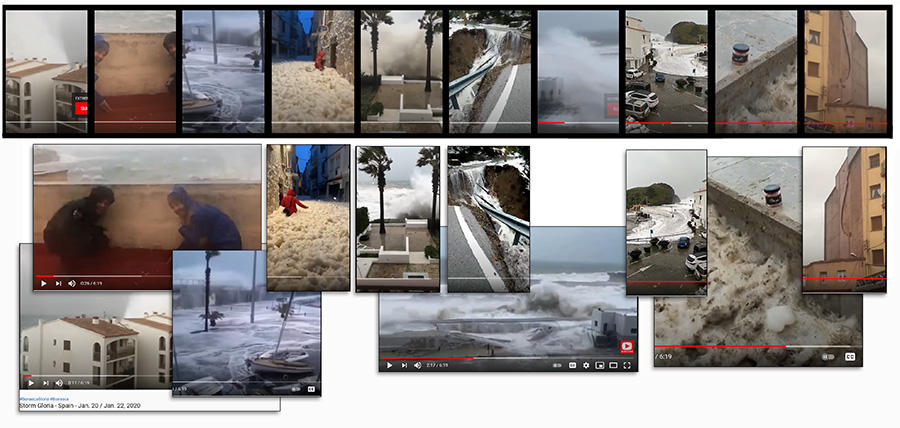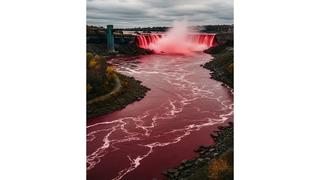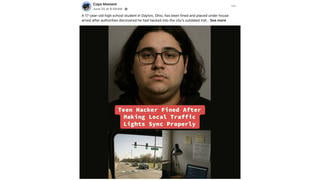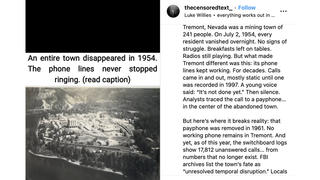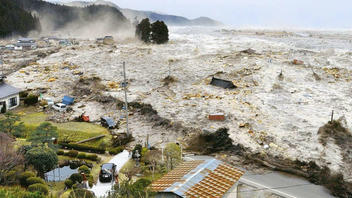
Did mini tsunamis recently hit the resort regions of Spain? No, that's not true on several points. The foreboding clickbait captioning on this video implies that this footage is from an event that just happened -- but it's over a year old.
Apparently, the whole video and its thumbnail image have been flipped to make it difficult to identify the original scenes. The video shows Storm Gloria, which hit northern Spain on January 19, 2020. These waves were not tsunamis caused by undersea earthquakes, but were driven by strong winds. Also misleading: The thumbnail for this video is a photo of the city of Rikuzentakata in Japan being hit by the tsunami of 2011. This scene does not appear in the video.
The copy of 2020 storm footage was posted on YouTube as a video (archived here) on the channel "EXTREME WEATHER & NATURAL DISASTERS" on April 14, 2021 under the title "Mini tsunamis hit the resort regions of Spain! An amazing sight! Waves are higher than houses!" It opens:
An amazing sight! Mini tsunamis hit the resort regions of Spain! Waves are higher than houses! What do you think? Why are there so many natural disasters lately? Is it a climatic weapon (Haarp) or is it an omen of the second coming of Jesus Christ? Perhaps science has already given the answer and this is global warming? Please write your version in the comments below the video! Enjoy watching.
Click below to watch the video on YouTube:
Lead Stories identified another YouTube video over a year old that includes the original versions of these video clips. This video from "Disaster Compilations" channel, titled, "
Below is a collection of stills from the two videos demonstrating that footage in the 2021 video is from Storm Gloria, which hit Spain in January 2020. Lead Stories did not verify that each of the video clips included in the "Disaster Compilations" video was indeed footage of Storm Gloria. The date of that video's upload is enough to demonstrate that this footage is over a year old. Using the Video Keyframes InVID verification tool, the scenes spotchecked were confirmed to be from Gloria.
(Source: Lead Stories graphic from YouTube screenshots Thu Apr 15 16:42:26 2021 UTC)
The waves that crashed into coastal Spanish towns were driven by high winds; they were not "mini tsunamis." The National Ocean Service describes a tsunami this way:
Tsunamis are giant waves caused by earthquakes or volcanic eruptions under the sea. Out in the depths of the ocean, tsunami waves do not dramatically increase in height. But as the waves travel inland, they build up to higher and higher heights as the depth of the ocean decreases. The speed of tsunami waves depends on ocean depth rather than the distance from the source of the wave. Tsunami waves may travel as fast as jet planes over deep waters, only slowing down when reaching shallow waters. While tsunamis are often referred to as tidal waves, this name is discouraged by oceanographers because tides have little to do with these giant waves.
The thumbnail image of this miscaptioned video shows the tsunami wave that hit Japan on March 11, 2011. That wave was caused by an undersea earthquake. The thumbnail image, by Tamon Suzuki, shows the wave coming ashore in Rikuzentakata, Japan, where over 1,500 people died. The picture is featured in a National Geographic reference article, "TSUNAMIS 101"

